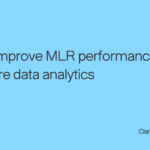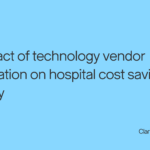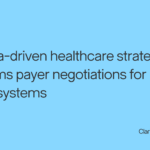While healthcare price transparency regulations aim to empower patients and promote competition in the market, providers face significant challenges in implementing and complying with these requirements effectively. Implementing price transparency requires a robust technology infrastructure to collect, store, update, and disseminate pricing information effectively. Many healthcare providers lack the necessary IT systems or resources to implement such infrastructure, leading to additional costs and implementation challenges. Healthcare providers can address issues with hospital price transparency data by prioritizing the accuracy, accessibility, and usefulness of the information provided to patients. There are many reasons why the healthcare industry needs to catch up to other industries when meeting evolving consumer expectations. And when it comes to being transparent about prices, provider organizations need help maintaining accurate and up-to-date pricing data across multiple service lines and billing codes. Healthcare providers should invest in robust data management systems capable of collecting, storing, and updating pricing information accurately and efficiently. Implementing advanced IT infrastructure, such as centralized databases or integrated billing systems, can help streamline data management processes and ensure data accuracy. Providers should establish protocols for regularly updating pricing data to reflect changes in reimbursement rates, negotiated discounts, and other factors. This may involve automating data updates through software solutions or assigning dedicated staff responsible for monitoring and maintaining pricing information. Robust price transparency data management systems and regular audits can help ensure the accuracy and reliability of pricing information. Such tools allow providers to develop strategies around rate negotiations, service line growth opportunities, and benchmarking against competition. Integrating price transparency data with EHRs can streamline pricing conversations and estimates, patient decisions, and post-care billing. EHR integration can improve the billing process by automatically generating cost estimates for services and procedures based on patient-specific information such as insurance coverage, deductibles, and copayments. This can reduce administrative burden and errors associated with manual billing processes. EHR-integrated price transparency data can facilitate financial counseling for patients by providing accurate estimates of out-of-pocket expenses and available payment options. Healthcare providers can proactively engage patients in discussions about healthcare costs and help them navigate potential financial barriers to care. Patients could also access this information during their appointments or through patient portals, allowing them to make more informed decisions about their healthcare. In addition to the EHR, providers should ensure that price transparency data is readily accessible to patients through multiple channels, including websites, patient portals, and in-person interactions. Utilizing user-friendly interfaces and interactive tools can enhance accessibility and empower patients to access and understand pricing information more easily. Online cost estimators and other patient-centric transparent billing practices go a long way toward empowering patients with price information. Many patients may also struggle with health and financial literacy. Clear, user-friendly materials that outline price information can help build patient trust among those who do. Additionally, providers can offer in-person or online patient education sessions to explain costs and billing processes and allow patients to ask questions. Healthcare pricing can be incredibly complex due to various factors such as insurance negotiations, discounts, bundled services, and different rates for different payers (e.g., private insurance, Medicare, Medicaid). Compliance with transparency regulations requires providers to disentangle these complexities and present clear, understandable pricing information to patients. Standardizing pricing information across different services, procedures, and departments can not only simplify the reporting process for hospitals but also enhance transparency and facilitate comparison for patients. However, some providers may still be reluctant to disclose pricing information due to concerns about competitive disadvantage. From their standpoint, transparency could potentially lead to price competition, eroding profit margins, or revealing pricing disparities between different payers or providers. Regular market analyses and benchmarking studies can provide a competitive advantage; with visibility into market prices, providers can set competitive prices and differentiate themselves from the competition. This transparency also helps patients understand the value of the services they are receiving, further strengthening the provider-patient relationship and enhancing patient satisfaction. By aligning prices with market rates, health systems can attract price-sensitive patients and increase market share. As healthcare consumers continue to ask more of their providers and seek more information and autonomy regarding their healthcare decisions, price transparency will continue to play a critical role in an already competitive landscape for providers. And patient expectations for such information will only increase. Maintaining systems to ensure the accuracy of pricing data, effectively balancing competitive pricing with operational efficiency and growth, and investing time and resources into integrating pricing data with your existing EHR and billing systems will allow providers to address challenges inherent in price transparency data. Compliance with price transparency guidelines is not just a regulatory necessity but a strategic imperative for providers aiming to stay ahead in the industry. By proactively addressing these issues, healthcare providers can turn the challenges of price transparency into opportunities for growth and patient satisfaction.Maintaining price transparency data
Integrating price transparency data with EHRs
Meeting patient expectations for price transparency
Balancing competitive pricing and market positioning
Investments in price transparency will separate market leaders from followers
- Author Details





